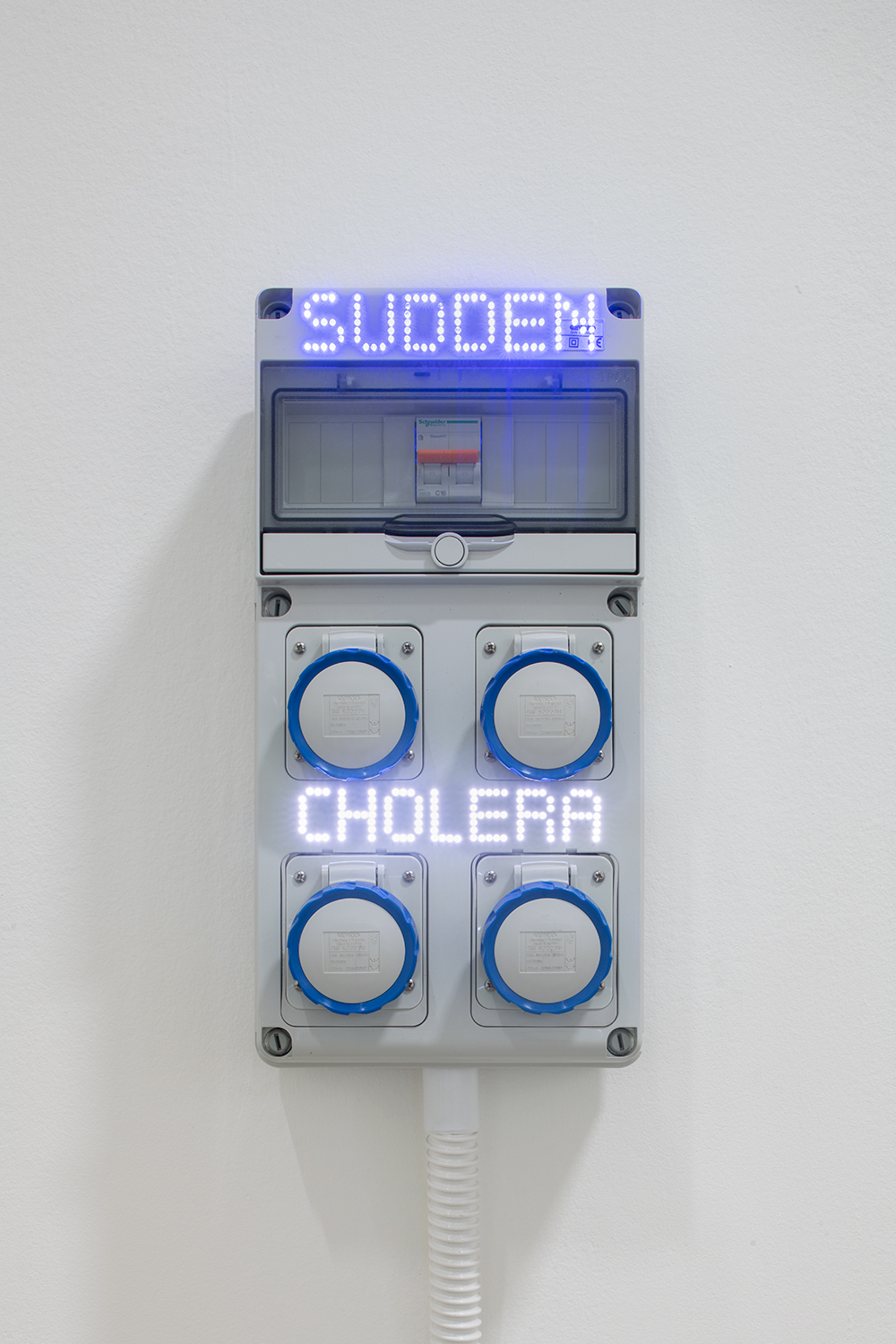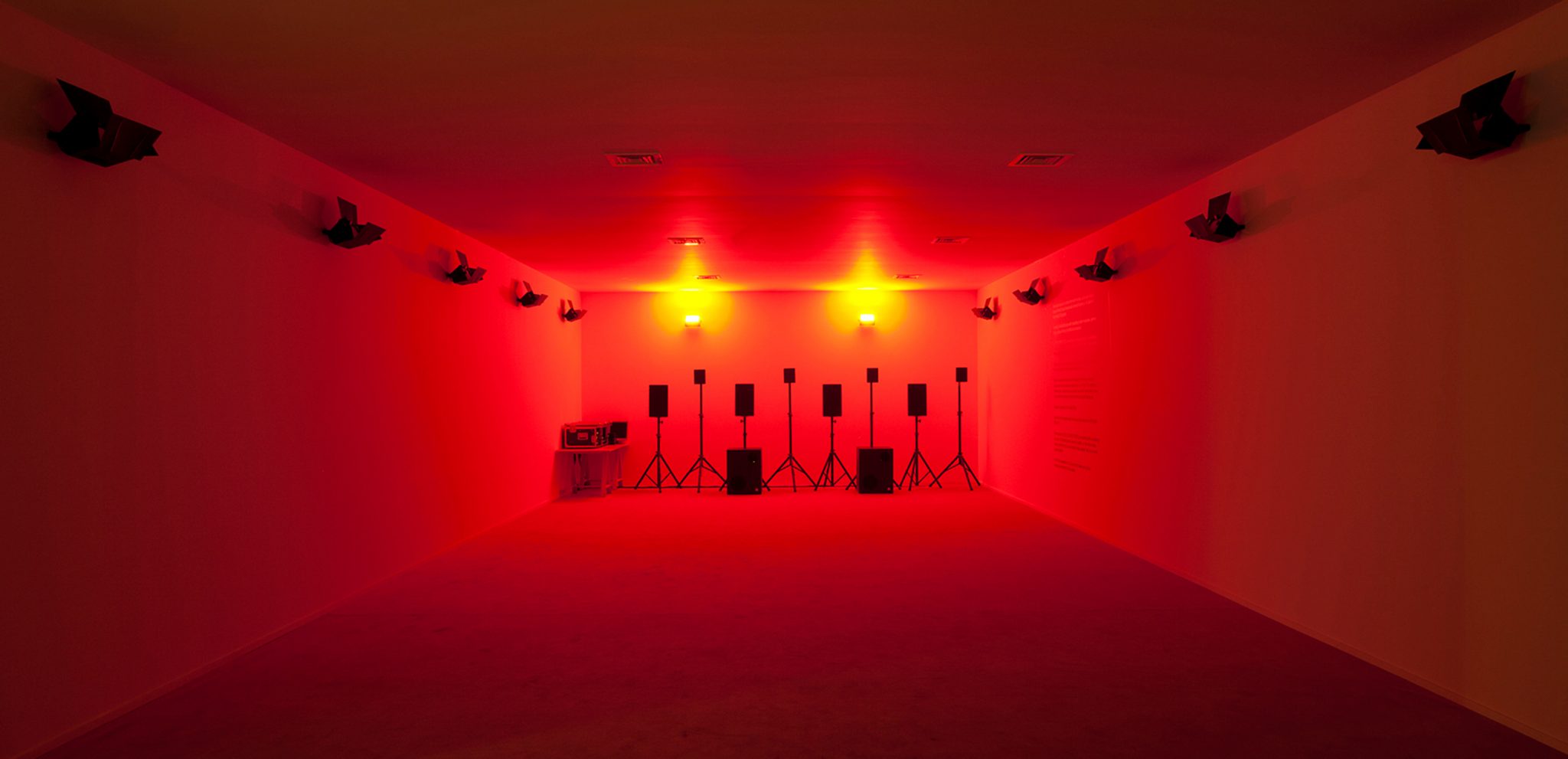The artist’s Paris exhibition Blind Ambition is a major presentation of new and old works in which recognisable signifiers are rendered unfamiliar
A sense of topsy-turvy begins even before reaching Hassan Khan’s dedicated exhibition space at the Centre Pompidou. PIGGIE PIGGIE LONGHANDS GROWL GROWL (2019), installed in the venue’s vast lobby, presents a cartoonishly oversized pig’s head paired with a stretched-out-yet-shrunken body, its face dotted with black eyes and digitally printed pasted-on fangs. The grotesque creature is at once jarring and a little alarming, a peculiar mix of plush harmlessness and unexpected menace. This rogue slant from the norm provides the theme of Blind Ambition, a major presentation of new and old works in which recognisable signifiers are rendered unfamiliar.
The exhibition landscape of modulated light-wood platforms provides a scenographic device uniting some 40 formally diverse pieces – many shown in France for the first time – as one vast experience. From glass sculptures to prints on aluminium to a photographic portrait of the artist’s mother, the experimental nature of Khan’s practice is expressed in a wide range of contours and scales: a variety that’s playful but also ultimately defiant, as if refusing to participate in any one framework. A sound installation, The Infinite Hip-Hop Song (2019), ushers the visitor into the space with unending algorithmic remixes: a rolling sonic experience created from material provided by 11 Egyptian rappers. It sets in motion Khan’s view that seemingly anything can mutate.

Khan came to art having studied English and Comparative Literature at the American University in Cairo. After his studies he worked as a teacher, translator, magazine editor and video producer, while also playing with various bands and producing soundtracks for theatre. Given this trajectory, it’s perhaps unsurprising that language so often permeates his works, be it his video The Dead Dog Speaks (2010) – in which language is rendered as an absurdist back-and-forth patter – or 2013 Curtain Remix (2021), in which text messages pulled from an exchange with a virtual AI chatbot festoon a bright orange curtain (‘You never know what it’s like to be someone, or what they really go through,’ one text bubble states). In both these works, communication appears slippery and shifty.
The Agreement (2011), a series of short-form narratives printed on the wall, highlights the incomplete nature of storytelling by virtue of what is occluded. Each story abruptly cuts off right at the brink of what its narrative builds up to: two schoolboys digging for something unknown, five informers contending with an officer, a smoking man running late to meet an acquaintance he looks down upon. A slew of peculiar novelty items are lined below the vignettes. Pairing the stories with these miscellaneous and elusive objects – like the hindquarters of a horse, or a photographic image of a fountain printed on loose-leaf and anchored by four miniature paperweights – adds perplexity as to what innuendos they draw out of already truncated stories, especially since none are cited in or obviously resonant with the texts. The spectator-turned-reader is likely more confounded than enlightened by the ensemble.

But perhaps that’s precisely the point of Khan’s exhibition, which seems, at each turn, to refute the possibility of a ‘revelation’, or even cogent codification. The Alphabet Book (2006), which pairs non-illustrative images alongside the 26 letters as a kind of randomised abecedarium, highlights how linguistic associations could be reimagined to be equated with almost anything: such associations and parameters are malleable.
In Khan’s series Sentences for a New Order (2018), he customised electricity boxes with LED lights blinking warnings of ‘SUDDEN CHOLERA’ and ‘TREMBLING WORLDS’, rendering a pragmatic appliance one of existential panic. Similarly, the brass sculpture Banque Bannister (2010) – an untethered handrail that anchors nothing and leads to nowhere – turns a banal architectural detail into a folly with a splash of Dada humour. The cumulative effect of these pieces, reinvesting and twisting reality, is jest mixed with malaise. Blind ambition prevents people from seeing what’s happening around them. In Khan’s survey, it seems to point to our own inability to realise what’s happening around us – the sinister impact of technology, the loss of meaningful connections with others and the looming of ecological horror – until it’s already too late.
Hassan Khan: Blind Ambition is at Centre Pompidou, Paris, until 25 April
